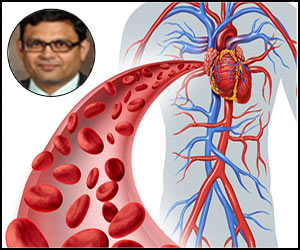- Home
- Editorial
- News
- Practice Guidelines
- Anesthesiology Guidelines
- Cancer Guidelines
- Cardiac Sciences Guidelines
- Critical Care Guidelines
- Dentistry Guidelines
- Dermatology Guidelines
- Diabetes and Endo Guidelines
- Diagnostics Guidelines
- ENT Guidelines
- Featured Practice Guidelines
- Gastroenterology Guidelines
- Geriatrics Guidelines
- Medicine Guidelines
- Nephrology Guidelines
- Neurosciences Guidelines
- Obs and Gynae Guidelines
- Ophthalmology Guidelines
- Orthopaedics Guidelines
- Paediatrics Guidelines
- Psychiatry Guidelines
- Pulmonology Guidelines
- Radiology Guidelines
- Surgery Guidelines
- Urology Guidelines
PERSPECTIVE: The Good, the Bad and the Ugly of the 2019 AHA/ACC CVD Primary Prevention Guidelines- Prof Sundeep Mishra

"There is no free lunch with aspirin, only free bleeding"
On March 17th 2019, in the just-completed American College of Cardiology (ACC) Meeting, the ACC and the American Heart Association (AHA) have released new guidance on the primary prevention of cardiovascular disease. Broadly the guideline is a way forward towards a healthier life for mankind in general and health care practitioners in particular. It has many elements which are “good”, a way forward but also elements which are “bad” due to certain omissions/commissions and “ugly” because of facts based on some controversial data.
Coming to these specifically:
The Good
1. The focus of CVD prevention has evolved from the use of drugs to lifestyle modification. This is based on the fact that social determinants are far more important (4-8 times) than health- care received and that nearly 80% of all cardiovascular disease can be prevented with merely adopting correct lifestyle choices. Finally, in the new guidelines, there is an emphasis on shared decision-making between the cared and the caregivers.
2. Diet: Adults should consume a healthy diet that emphasizes the intake of vegetables, fruits, nuts, legumes, whole grains, lean vegetable or animal protein, and fish and minimizes the intake of processed meats, refined carbohydrates, sodium, and sweetened beverages. Avoid consumptions of trans-fat.
3. Physical activity: The focus has shifted from exercise and type of exercise to physical activity, the guideline recommending 150 minutes/week of accumulated moderate-intensity physical activity or 75 minutes/week of vigorous-intensity physical activity (and not exercise).
4. Drugs: In the current guidelines drugs have generally taken a back-seat. In particularly aspirin (based on recent studies like ARRIVE, ASCEND, and ASPREE) is found to cause more harm than benefit; more bleeding risk than ASCVD benefit and therefore no longer generally recommended for primary prevention (however, they could be considered based on higher CVD risk). Statins are to be prescribed based on the earlier lipid guidelines.
The Bad
There seems to be a faulty suggestion if one reads just take-home messages that “every human being between the age of 40 and 75 should be taking statins.” At present, it is unclear whether this message is a departure from prior recommendations, a total breakdown of science and reason, or a mere misprint?
The Ugly
1. There are some suggestions based on seemingly weak data that the target blood pressure should generally bp<140 / 80 mmHg. The diastolic BP level of <80 mmHg seems too severe at least for elderly and/or diabetic populations and in accordance, most European, American and International guidelines have kept the diastolic value above 80 mmHg. Thus, this statement could have been qualified.
2. The document recommends replacing saturated fat with poly- and monounsaturated fats, however, the data supporting this argument is still not robust.
3. The ugly underbelly of society has also been brought out by these guidelines informing that revealing that underserved and low-income populations have a higher risk of heart disease and life expectancy which can vary by more than 20 years in people living just miles apart. The reason could be low consumption of quality foods like fruits and vegetables and less access to exercise facilities, unlike richer populations.
Prof (Dr) Sundeep Mishra is a renowned Cardiologist and the Professor of Cardiology at AIIMS, New Delhi. He is an avid writer and Hon. Editor of Indian Heart Journal.

Disclaimer: This site is primarily intended for healthcare professionals. Any content/information on this website does not replace the advice of medical and/or health professionals and should not be construed as medical/diagnostic advice/endorsement or prescription. Use of this site is subject to our terms of use, privacy policy, advertisement policy. © 2020 Minerva Medical Treatment Pvt Ltd